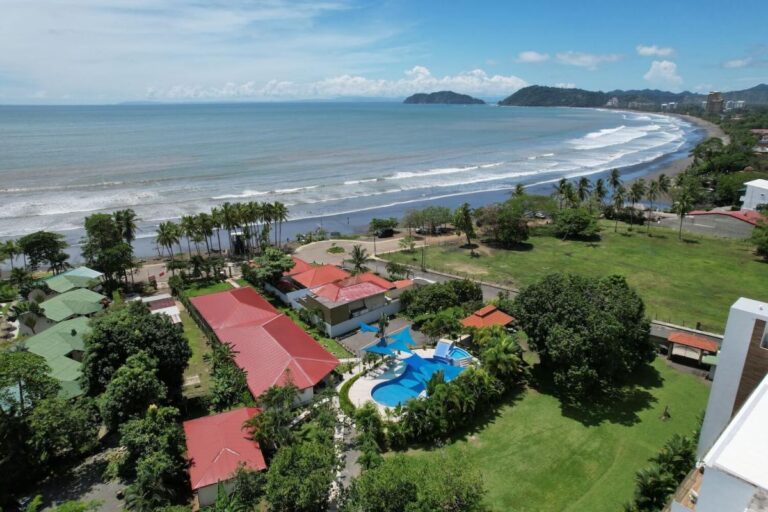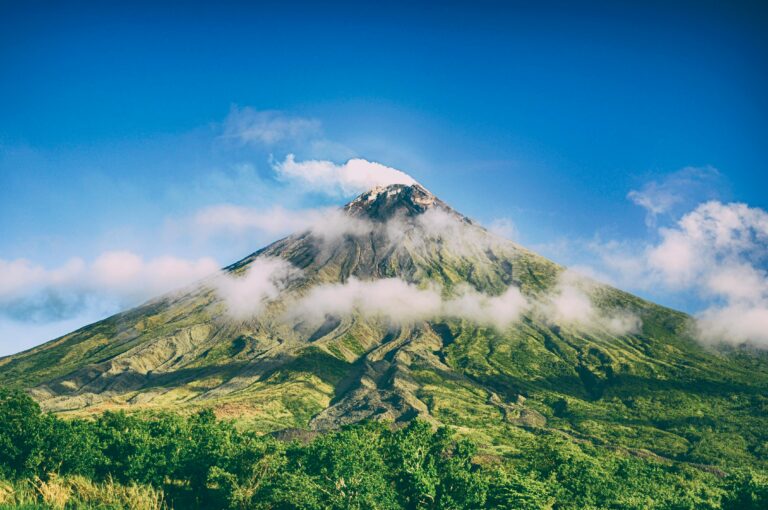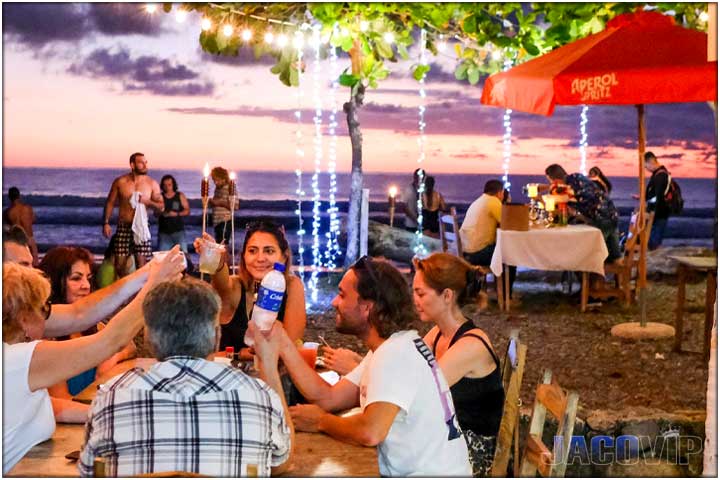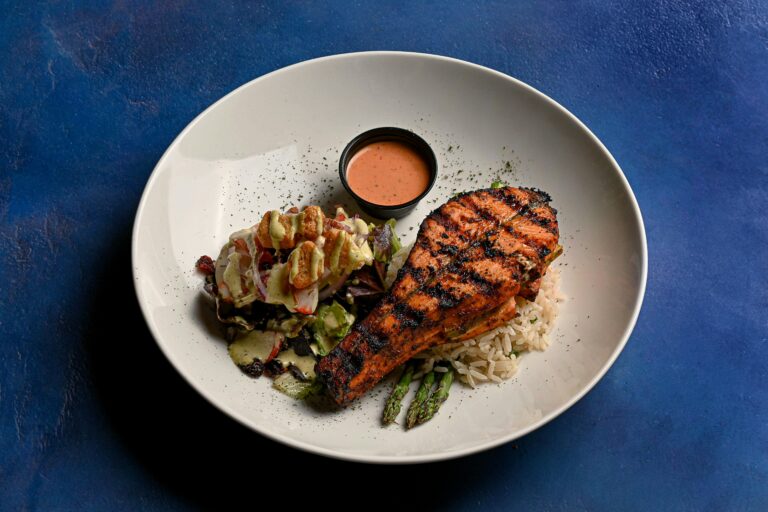How Much Does Costa Rica Cost? A Guide to Budgeting Your Trip
Costa Rica, a jewel of Central America, captivates travelers with its stunning beaches, lush rainforests, and incredible biodiversity. From the misty cloud forests of Monteverde to the sun-soaked shores of Manuel Antonio, this small country packs a big punch for tourists. But a common question arises: How much does a trip to Costa Rica really cost? Let’s dive deep into the expenses you can expect, helping you plan a trip that fits your budget without compromising on experiences.
Travel Costs to Costa Rica
Flights
The cost of flying to Costa Rica varies widely depending on your departure point and the time of year you choose to visit. From major U.S. cities, round-trip tickets typically range from $300 to $800. East Coast departures often fall on the lower end of this spectrum, while West Coast flights tend to be pricier. European travelers should expect to pay more, with prices generally between $600 and $1200 for round-trip flights.
Peak tourist season, which runs from December to April, sees higher flight prices. If you’re flexible with your travel dates, consider visiting during the “green season” (May to November) for potentially significant savings on airfare.
Visa and Entry Fees
Costa Rica welcomes tourists from many countries without requiring a visa for stays up to 90 days. This includes visitors from the United States, Canada, the European Union, and many other nations. However, you must have a valid passport with at least one day of validity beyond your planned stay.
While entry is visa-free for many, don’t forget to budget for the mandatory departure tax. Currently set at $29, this fee is sometimes included in your airline ticket price. If not, you’ll need to pay it at the airport before leaving Costa Rica.
Accommodation Costs
Budget Options
For travelers watching their wallet, Costa Rica offers a range of budget-friendly accommodations. Hostels provide the cheapest option, with dorm beds in most areas costing between $10 and $20 per night. Many hostels also offer private rooms, which typically range from $25 to $50 per night.
Budget hotels and guesthouses present another economical choice. These basic but comfortable accommodations usually cost between $30 and $60 per night for a double room. In less touristy areas, you might find even lower prices.
Mid-Range Hotels
Mid-range hotels in Costa Rica cater to travelers seeking more comfort without breaking the bank. Prices for these accommodations generally fall between $60 and $150 per night. At this price point, you can expect amenities like air conditioning, private bathrooms, and often a swimming pool.
Many mid-range hotels also include breakfast in their rates, which can help you save on food costs. Some popular mid-range options include boutique hotels in San José, beachfront properties in less developed areas, and eco-lodges on the outskirts of national parks.
Luxury Resorts
For those looking to splurge, Costa Rica boasts some truly spectacular luxury resorts. These high-end properties start at around $200 per night, with prices easily exceeding $1000 for the most exclusive experiences.
Luxury accommodations in Costa Rica often focus on eco-friendly practices and immersive natural experiences. You might find yourself in a treehouse villa in the rainforest, a beachfront bungalow with private plunge pool, or a mountain lodge with panoramic volcano views. Many luxury resorts also offer all-inclusive packages, which can provide good value despite the high upfront cost.
Food and Drink Expenses
Local Cuisine
Eating like a local is not only a great way to experience Costa Rican culture, but it’s also easy on the wallet. A typical “casado” – a plate of rice, beans, salad, plantains, and a choice of meat or fish – costs between $5 and $7 at local eateries known as “sodas.”
Street food and snacks offer even more budget-friendly options. Empanadas, tamales, and fresh fruits from street vendors rarely cost more than $2-3. Don’t miss trying “gallo pinto,” the national dish of rice and beans, often served for breakfast.
Restaurant Meals
Mid-range restaurants in Costa Rica cater to both locals and tourists, offering a mix of international and Costa Rican cuisine. Main courses at these establishments typically cost between $10 and $20. Seafood dishes might be on the higher end of this range, especially in coastal areas.
For a special night out, high-end restaurants in tourist hotspots and major cities offer gourmet experiences. Expect to pay $30 to $50 or more per person for a meal at these upscale venues. Many focus on farm-to-table concepts, showcasing Costa Rica’s abundant fresh produce and seafood.
Drinks
Quenching your thirst in Costa Rica doesn’t have to be expensive. Local beers like Imperial and Pilsen cost $2 to $4 in most bars and restaurants. For a true taste of Costa Rica, try “guaro,” the local sugar cane liquor.
Cocktails in bars or restaurants generally range from $5 to $10, with prices higher in upscale establishments or tourist areas. Non-alcoholic options like fresh fruit juices or “batidos” (smoothies) typically cost $2 to $4.
Costa Rica produces excellent coffee, and a cup in a local café usually costs between $1 and $3. Don’t miss the chance to tour a coffee plantation to learn about the country’s coffee heritage.
Transportation Costs
Public Buses
Costa Rica’s public bus system offers the most economical way to travel around the country. Short trips within towns or cities often cost less than $1. Longer journeys between major destinations like San José to Manuel Antonio or La Fortuna typically range from $5 to $20.
While affordable, public buses can be time-consuming due to frequent stops and sometimes unpredictable schedules. However, they provide an authentic local experience and a chance to see more of the countryside.
Rental Cars
Renting a car gives you the freedom to explore Costa Rica at your own pace. Daily rates for basic cars start around $30, but can vary significantly depending on the type of vehicle and the rental period. Four-wheel drive vehicles, which are recommended for some rural and mountain roads, cost more – typically $50 to $100 per day.
Remember to factor in the cost of insurance, which can add significantly to the base rental price. Also, budget for fuel costs. While not as expensive as in Europe, gas prices in Costa Rica are higher than in the United States.
Taxis and Ride-sharing
Taxis are readily available in larger cities and tourist areas. Most taxis are metered, with rates starting at about $1 and increasing by about $1 per kilometer. Short trips within towns typically cost $3 to $10, while longer rides can cost $20 or more.
Uber operates in the San José metropolitan area and some other major towns. It often offers more competitive rates than traditional taxis, especially for longer trips.
Shuttles and Domestic Flights
Shared shuttle services between popular tourist destinations provide a comfortable middle ground between public buses and private transfers. Prices vary by route but typically range from $30 to $70 per person.
For longer distances, consider domestic flights. Airlines like Sansa and Skyway connect major tourist destinations. One-way fares typically range from $50 to $150, depending on the route and how far in advance you book.
Activities and Attractions
National Parks
Costa Rica’s national parks showcase the country’s incredible biodiversity. Entry fees range from $10 to $20 per person for most parks. Popular parks like Manuel Antonio charge at the higher end of this range.
Some parks, like Tortuguero, are best visited with a guide. Guided tours can cost $30 to $60 per person but provide invaluable insight into the local ecosystem.
Adventure Activities
Costa Rica is an adventure lover’s paradise. Here are some popular activities and their typical costs:
- Zip-lining: $50 to $100 per person
- White water rafting: $60 to $125 for a day trip
- Surfing lessons: $40 to $80 for group lessons, more for private instruction
- Volcano hikes: $50 to $100, including transportation and guide
- Snorkeling trips: $50 to $80 for half-day excursions
Wildlife Tours
Guided wildlife tours offer the best chance to spot Costa Rica’s famous residents like sloths, monkeys, and tropical birds. Prices vary widely based on location and duration:
- Tortuguero canal tours: $20 to $40 for a few hours
- Corcovado National Park guided hikes: $100 to $150 for a full day
- Night walks in the rainforest: $30 to $50
- Whale watching (seasonal): $60 to $100
Cultural Experiences
Don’t overlook Costa Rica’s cultural offerings:
- Coffee plantation tours: $30 to $70, often including tastings
- Cooking classes: $40 to $80 for group classes
- Indigenous community visits: $50 to $100 for day trips
- Art workshops: $30 to $60 for classes in traditional crafts
Daily Budget Estimates
Budget Traveler
Budget-conscious travelers can enjoy Costa Rica on $30 to $50 per day. This typically covers:
- Dorm bed in a hostel
- Meals at local sodas and street food
- Public transportation
- Some low-cost activities or national park entries
To stick to this budget, you’ll need to be selective about paid activities and limit alcohol consumption.
Mid-Range Traveler
Mid-range travelers should budget $100 to $200 per day. This allows for:
- Private room in a mid-range hotel
- Mix of local and tourist-oriented restaurants
- Rental car or shuttle services
- Daily activities or tours
This budget provides a comfortable experience without excessive luxury.
Luxury Traveler
Luxury travelers can expect to spend $200 or more per day. This covers:
- Rooms in high-end villas, resorts or eco-lodges
- Fine dining experiences
- Private transfers or rental of a premium vehicle
- Exclusive tours and activities
At this level, you can enjoy the best that Costa Rica has to offer in terms of comfort and experiences.
Saving Money in Costa Rica
Travel in the Low Season
The “green” or low season (May to November) offers significant savings. Many hotels reduce their rates by 20-30%, and you can often negotiate better prices on tours and activities. While this coincides with the rainy season, mornings are typically sunny, and the lush green landscape is at its most beautiful.
Eat Local Food
Embrace Costa Rican cuisine to keep your food costs down. Local sodas offer hearty, delicious meals at a fraction of the cost of tourist restaurants. Visit farmers’ markets for fresh fruits and vegetables at bargain prices.
Use Public Transportation
Costa Rica’s bus system is extensive and very affordable. While it requires more time and planning, using public transportation can save you hundreds of dollars over the course of a trip compared to renting a car or using private transfers.
Book in Advance
Especially for high season travel, booking flights, accommodations, and popular tours in advance can result in significant savings. Many hotels offer early booking discounts, and you’re more likely to find deals on flights and activities.
Look for Package Deals
Some tour operators and hotels offer package deals that include accommodation, transportation, and activities. These can provide good value, especially for short trips or visits to more remote areas.
Stay in Less Touristy Areas
Popular destinations like Manuel Antonio and Tamarindo tend to be more expensive. Consider less-visited but equally beautiful areas like the Osa Peninsula or the Caribbean coast for a more budget-friendly experience.
Hidden Costs to Consider
Travel Insurance
Travel insurance is essential for a trip to Costa Rica. It covers you for unexpected medical expenses, trip cancellations, and lost luggage. Expect to pay about 4-10% of your total trip cost for comprehensive coverage.
Tipping
While not as ingrained as in the United States, tipping is appreciated in Costa Rica. Budget for:
- 10% at restaurants (if service charge isn’t included)
- $1-2 per bag for porters
- $5-10 per day for tour guides
- 10-15% for taxi drivers and spa services
ATM Fees
Using ATMs in Costa Rica may incur fees from both your home bank and the local bank. Check with your bank about international withdrawal charges. Some travelers find it economical to make fewer, larger withdrawals to minimize fees.
Environmental Fees
Some areas, like Tortuguero, charge small environmental fees upon entry. These are typically just a few dollars but can add up if you’re visiting multiple locations.
Souvenirs and Shopping
Don’t forget to budget for souvenirs. Popular items include coffee, handicrafts, and local art. Prices vary widely, but setting aside $50-100 for shopping is reasonable for most travelers.
Conclusion
Costa Rica offers a wealth of experiences for every type of traveler and budget. By understanding the costs associated with different aspects of your trip, you can plan effectively and focus on creating unforgettable memories in this beautiful country. Remember, while budgeting is important, the value of experiencing Costa Rica’s natural wonders and warm culture is truly priceless.
Plan Your Costa Rican Adventure Today!
Costa Rica is waiting for you! From budget-friendly escapes to luxurious getaways, our guide helps you plan the perfect trip without breaking the bank. Discover the best of Costa Rica’s natural beauty, vibrant culture, and thrilling adventures.
Visit explorecostaricanow.com for more travel tips, insider secrets, and unbeatable deals. Have questions or need personalized advice? Contact us at:
- Phone: 800-676-0717
Start planning today and get ready for an unforgettable journey through Costa Rica’s stunning landscapes and rich culture!







